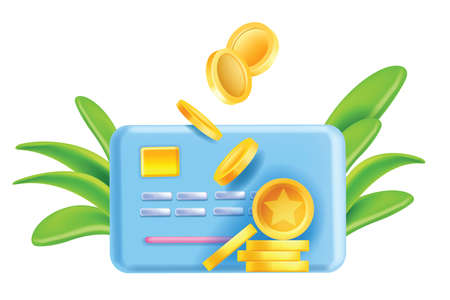1. Introduction to Economic Cycles and the Art Market
The art market, like any other financial sector, is influenced by broader economic cycles. Understanding these cycles can help investors and collectors make informed decisions about buying and selling art. Economic cycles typically move through periods of expansion, peak, contraction, and trough, each affecting the art market in different ways.
Overview of Economic Cycles
Economic cycles consist of four main phases:
| Phase | Description | Impact on Art Market |
|---|---|---|
| Expansion | Economic growth, rising incomes, and increased consumer confidence. | Higher demand for art as investment and luxury spending increase. |
| Peak | The economy reaches its highest point before slowing down. | Art prices may reach record highs; strong competition among buyers. |
| Contraction | A slowdown in economic activity, often marked by falling stock markets. | Lower demand for art; some investors sell assets to gain liquidity. |
| Trough | The lowest point in the cycle before recovery begins. | Bargain opportunities arise as prices stabilize or drop significantly. |
Key Economic Indicators Affecting Art Investment
Certain economic indicators provide insights into how the art market may perform during different phases of the economic cycle:
(1) GDP Growth Rate
A strong GDP growth rate usually signals a robust economy, leading to increased disposable income and higher art sales. Conversely, slow or negative growth may result in cautious spending among collectors and investors.
(2) Stock Market Performance
The stock market often correlates with art market trends. When stocks perform well, wealthy investors have more capital to allocate to alternative assets like fine art. During downturns, some may liquidate assets, leading to price fluctuations.
(3) Interest Rates
Low interest rates encourage borrowing and spending, making it easier for collectors to finance art purchases. High interest rates can reduce discretionary spending and lower demand for high-value artworks.
(4) Inflation Levels
Inflation can affect the purchasing power of collectors. In times of high inflation, tangible assets like artwork may be seen as a hedge against declining currency value, increasing demand for blue-chip pieces.
(5) Consumer Confidence Index
This index reflects public sentiment about the economy’s future. When confidence is high, people are more likely to invest in luxury goods such as fine art. Low confidence levels may lead to hesitation in making large purchases.
2. Art Market Performance During Economic Booms
How Economic Growth Fuels Art Demand
During periods of economic expansion, rising incomes and increased wealth drive higher demand for art. As individuals and institutions experience financial growth, they often look for alternative investment opportunities, with the art market becoming a prime beneficiary. This surge in demand leads to increased prices, more competitive auctions, and a rise in private sales.
The Role of Wealthy Collectors and Institutional Investors
High-net-worth individuals (HNWIs) play a crucial role in shaping the art market during economic booms. With greater disposable income, affluent collectors actively acquire artworks, driving up prices and creating strong market momentum. Additionally, institutional investors such as museums, galleries, and investment funds allocate more resources toward acquiring valuable pieces.
(1) Increased Auction Activity
Auction houses experience heightened activity during economic booms as both seasoned collectors and new buyers participate in bidding wars. Record-breaking sales often occur during these periods, with iconic artworks fetching unprecedented prices.
(2) Rising Private Sales
Beyond auctions, private sales also flourish. Many wealthy collectors prefer discreet transactions through galleries or dealers to secure exclusive pieces without public competition.
(3) Investment Diversification
Art becomes an attractive asset class for investors looking to diversify their portfolios. The perception of art as a store of value encourages more institutional involvement, further driving market growth.
Trends in Art Prices During Economic Booms
The following table highlights key trends observed in the art market during economic growth periods:
| Market Trend | Description |
|---|---|
| Higher Auction Prices | Bidding wars lead to record-breaking sales figures. |
| Increased Transaction Volume | A larger number of artworks are bought and sold. |
| Diversified Buyer Base | New collectors and investors enter the market. |
| Museum & Institutional Acquisitions | Museums and funds expand their collections. |
| Speculative Buying | Investors purchase art expecting future appreciation. |
The Long-Term Impact of Booms on the Art Market
The effects of an economic boom can extend beyond the immediate period of prosperity. Prices may remain elevated for some time, and the influx of new buyers can permanently alter market dynamics. However, the sustainability of high valuations depends on continued economic stability.

3. Effects of Economic Downturns on Art Prices and Sales
How Recessions Affect Art Valuation
During economic downturns, art valuations often experience volatility. Investors and collectors may become more cautious, leading to lower demand for certain artworks. However, blue-chip artworks by well-established artists tend to retain their value better than emerging or mid-tier artists works.
(1) Market Segmentation During Downturns
The impact of recessions on art prices varies depending on the segment of the market:
| Market Segment | Effect During Recession |
|---|---|
| Blue-Chip Art | More stable; retains value due to long-term demand |
| Mid-Tier Artists | Declines in value as buyers prioritize safer investments |
| Emerging Artists | Dramatic drop in demand; speculative buying decreases |
The Impact on Liquidity in the Art Market
A major challenge during financial crises is reduced liquidity. Fewer buyers are willing to spend large sums on art, resulting in slower sales cycles and an increase in unsold auction lots.
(2) Declining Auction Success Rates
Auction houses often experience a decline in success rates during recessions as fewer high-value pieces find buyers. This discourages sellers from bringing valuable works to market, further reducing available inventory.
(3) Case Study: 2008 Financial Crisis
The 2008 financial crisis had a significant impact on the art market:
- Auction sales dropped by nearly 30% globally.
- Sotheby’s and Christie’s saw reduced high-end transactions.
- Some collectors held onto assets rather than selling at lower valuations.
- The contemporary art sector was hit hardest as speculative buying decreased.
The Role of Market Confidence in Price Stability
The psychological aspect of investing plays a crucial role in the art market. When economic uncertainty rises, confidence declines, leading to lower participation from collectors and investors.
(4) Shifts in Buyer Behavior
During recessions, buyers tend to:
- Avoid speculative purchases.
- Focus on established artists with proven track records.
- Narrow their acquisitions to historically strong-performing categories like Old Masters or Modern Art.
(5) Recovery Patterns Post-Downturn
The art market typically recovers after economic downturns, but the timeline varies based on external factors such as government stimulus efforts and broader financial market stabilization. Understanding these patterns can help investors make informed decisions about timing their acquisitions.
4. The Role of Art as an Alternative Investment
During times of economic uncertainty, investors often seek alternative assets to preserve their wealth. Art has historically been considered a store of value, offering potential stability when traditional markets like stocks and real estate experience volatility.
How Art Performs Compared to Traditional Assets
Art behaves differently from traditional asset classes, making it an attractive diversification tool. While stocks and real estate are heavily influenced by economic cycles, art prices tend to follow a unique trajectory.
| Asset Class | Performance During Economic Uncertainty | Liquidity |
|---|---|---|
| Stocks | Often volatile, subject to market sentiment | Highly liquid |
| Real Estate | May decline due to reduced demand | Moderate liquidity |
| Art | Can retain or even appreciate in value | Lower liquidity compared to stocks and real estate |
Reasons Why Art Is Considered a Safe Haven Asset
(1) Low Correlation with Financial Markets
The art market does not move in tandem with stock markets, providing investors with a hedge against financial downturns.
(2) Tangible and Limited Supply
Unlike stocks or bonds, art is a physical asset with intrinsic cultural and historical value. Its scarcity helps maintain demand even in uncertain times.
(3) Strong Demand from Wealthy Collectors
The ultra-wealthy often continue purchasing high-value art regardless of economic conditions, ensuring that the market remains active.
5. Future Trends and Strategies for Art Investors
Predictions for the Art Market in Future Economic Cycles
The art market is closely tied to economic cycles, with periods of growth driving higher valuations and recessions often leading to a more cautious approach from collectors and investors. Looking ahead, several key trends may shape how the art market responds to future economic shifts.
(1) Increased Digitalization and Online Sales
The rise of online platforms has already transformed how art is bought and sold. During economic downturns, digital marketplaces provide liquidity and accessibility for investors who may hesitate to participate in traditional auctions.
(2) Diversification of Art Investment Portfolios
Just like in financial markets, diversification can help reduce risk. Investors will likely focus on a mix of emerging artists, blue-chip artworks, and alternative art assets such as NFTs to hedge against market volatility.
(3) Greater Interest in Tangible Assets
In times of economic uncertainty, tangible assets like fine art often become more attractive as stores of value. Investors may turn to artwork as a hedge against inflation and currency fluctuations.
Strategies for Navigating Market Volatility
Successful art investors must be prepared for fluctuating economic conditions. Below are strategies to help collectors and investors manage risks while maximizing opportunities:
| Strategy | Description |
|---|---|
| Long-Term Perspective | Avoid short-term speculation and focus on acquiring high-quality works with lasting value. |
| Diversified Portfolio | Invest in different genres, time periods, and mediums to mitigate potential losses. |
| Market Research | Stay informed about industry trends, artist reputations, and auction results to make data-driven decisions. |
| Liquidity Management | Avoid overleveraging; keep sufficient liquidity to take advantage of buying opportunities during downturns. |
| Use of Fractional Ownership | Consider fractional investment platforms that allow shared ownership of high-value artworks. |
The Role of Emerging Markets in Future Growth
The global nature of the art market means that emerging economies could play a significant role in future expansion. Countries such as China, India, and Brazil are seeing increasing interest in fine art as an investment asset.
(1) Rising Wealth in Developing Nations
A growing number of high-net-worth individuals in these regions are expected to drive demand for both contemporary and traditional artworks.
(2) Government Support for Cultural Investments
Certain governments are actively promoting cultural investments through tax incentives and grants, further fueling market expansion.


